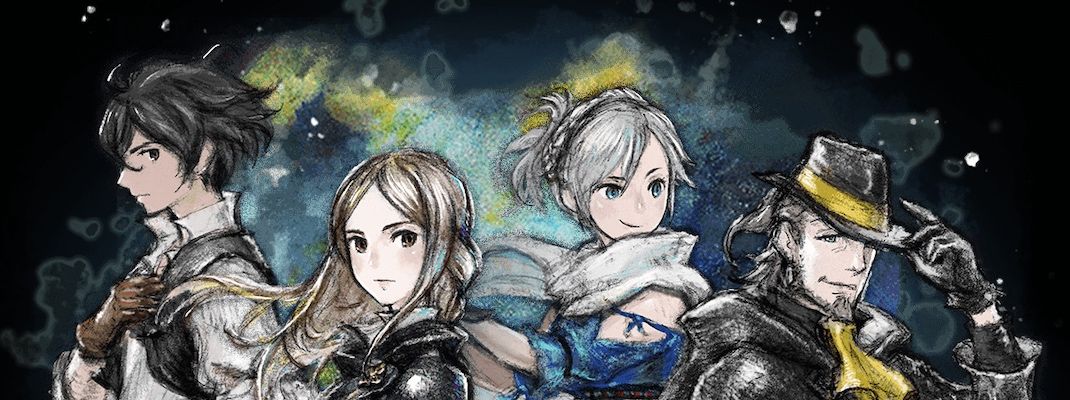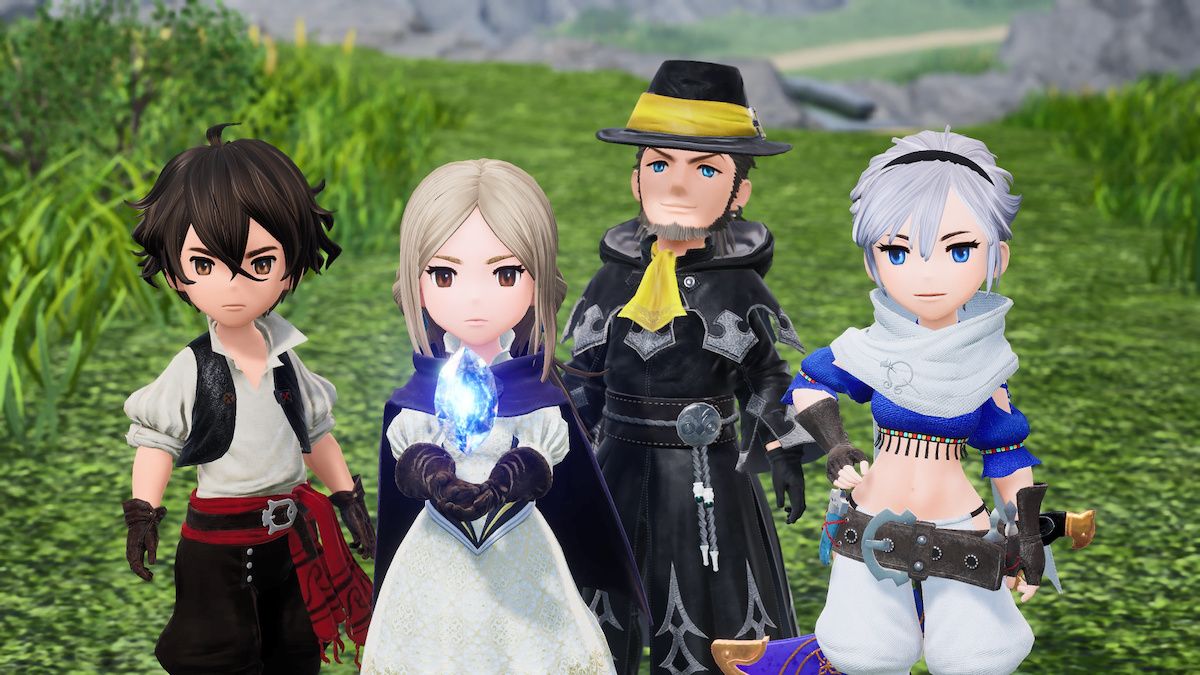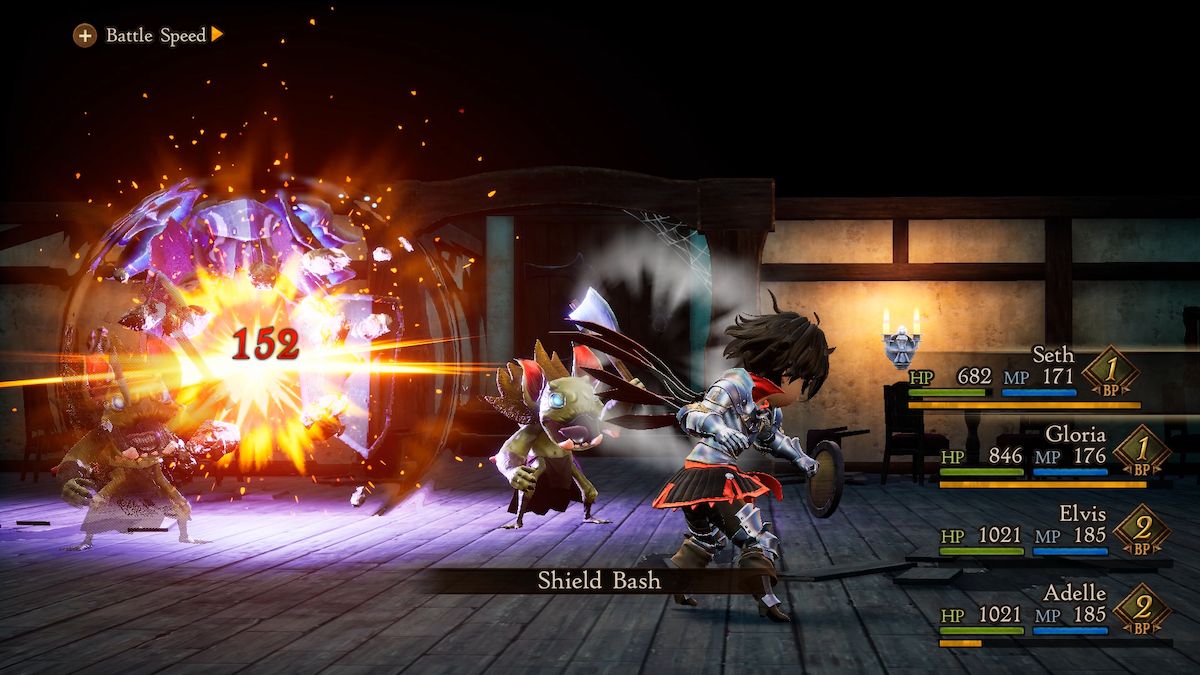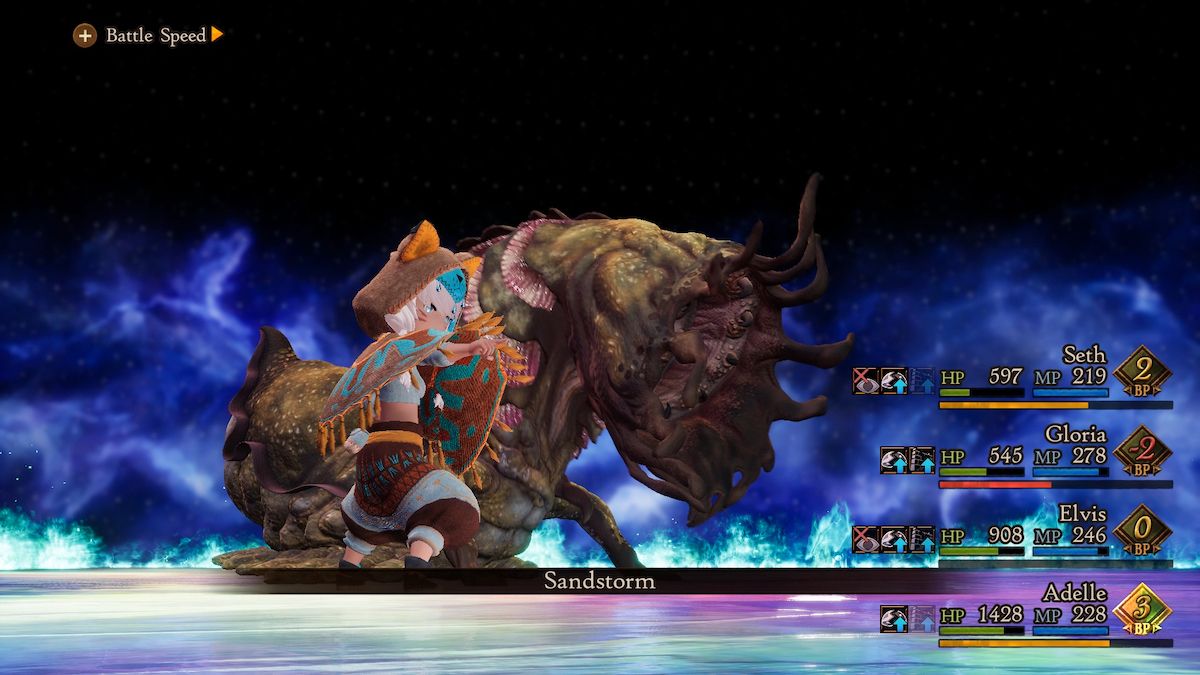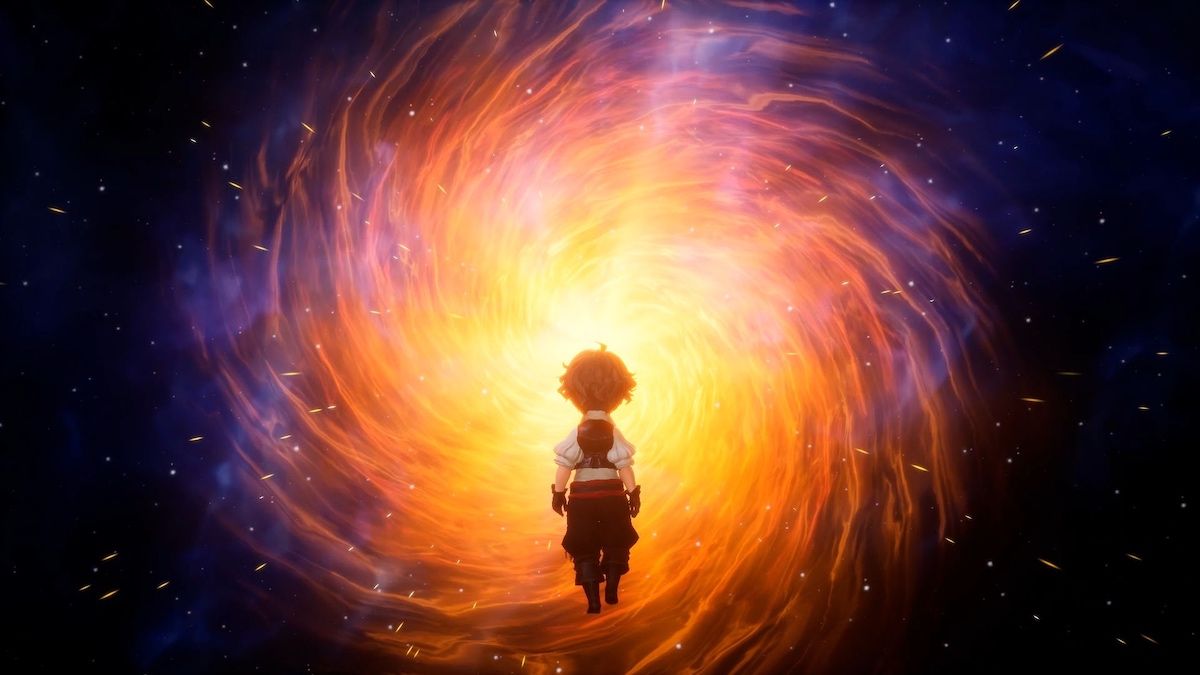Whatever you think of the varied directions Final Fantasy is going in -- not helped by the sheer scale of a back-catalog Dragon Quest has built itself to at current -- you can't fault Square Enix for offering a return to the traditional turn-based format of JRPGs. Projects that, while not to the same scale or budget as the more mainstream brands, at least offer a little more of a reconciling with the much-beloved genre's "golden age." A period of games that both the former Squaresoft and Enix developers contributed immensely towards. Over the past decade, this revisiting of the genre's roots has offered up titles with wildly-polarized outcomes, to the point you could almost lump them all into two distinct categories. On one side, you have the less-successful ones; varied their aesthetics may be and ambitious with what they hope to present, the output of names like Tokyo RPG Factory especially -- now spanning three games over a near half-decade -- haven't quite stuck the landing.
Then there's games like Octopath Traveler and more notably, 2012's Bravely Default. Perhaps unbeknownst to both fans and maybe [original developer] Silicon Studio alike, the 3DS outing in a way becoming the catalyst for Square Enix's realization and secondary motion on catering to long-time fans less-than-excited for the genre's move away from tradition. Originally starting as a Final Fantasy spin-off it may have been, the game's brand of charming presentation and lest we forget, a rather clever subversion on the literal mechanics of turn-based combat (with its ability to store/borrow "turns" of sorts), was what granted it its own unique identity. And just like how Acquire's 2018 hybrid aesthetic of 16-bit, 2D sprites in a 3D voxel world both excited and amazed, Bravely Default was itself a marriage of nostalgia and reinvention. Appreciation for the conventions that helped build the genre, but knowledge too on how to keep that approach fresh and surprising. And with a direct sequel arriving two years later, Bravely Default took pleasure in exercising the staples of 90's JRPG philosophy -- as cliched some of them might have gotten.
Returning to the pop-up, picture-book arrangement of locales, as much the simplified, toy-like mannerism of character design, remains as novel a look in Bravely Default II as it was with the original. The platform may no longer be handheld, but at its best, that same stage-show appearance is just as fondly smile-inducing as it was almost a decade ago. Pantomime-esque villains and all-too-familiar narratives revolving around heroes of light hoping to save the world from calamity. Cutscenes that have characters enter/exit the screen like it were all a literal stage performance. Enter stage-left, exit stage-right -- the environment the characters currently residing in little more than a flat, painted backdrop. Town buildings acting like no more than mere props, held up by the flimsiest of unseen, wooden stands alike.
It's important to reiterate just how much fondness is expressed with the third game's similar approach to world design, combat, and just maybe, that vital ounce of self-awareness to its middle-of-the-road, cliche-ridden story. A story whose best, expository moments are plentiful, albeit sprinkled about the lengthy trail required to get to its most climactic points. Bravely Default II does unfortunately falter -- issues that, for some, can be put down to the somewhat-unsuccessful transitioning from out its former handheld abode. A delivery whose unflattering visual fidelity, frame-rate stutters and clear masking of the Switch's [to put it mildly] limited capabilities does lend itself to an experience with an all too rough-around-the-edges look about it. A once-portable series whose console "debut" if you will doesn't hold as much the same rosey-eyed admiration for yonder age. When even the game struggles to have menus function smoothly without a frame drop or two taking hold -- something as simple as marking a side quest down as complete, freezing for half a second -- it's unfortunately one too many shortcomings that the canny artistry just can not excuse.
The difference though -- and perhaps one of the reasons why Bravely Default II just about gets away it -- is that its role-playing structure, of which once more revolves around its Job classes, remains just as enticing as the 3DS outings were previous. Experimentation is the order of play, even if that does result in an all-too-familiar, trail-and-error accumulation of game overs and subsequent retries. Hoping for that ideal mix of physical and magic-based offense/defense, all the while acknowledging that one of your four characters taking on the role of dedicated healer/tank/support, may be the vital piece missing. Once again, there's a lot to uncover and build towards in Bravely Default II -- abilities that unlock at different Job levels that are not only combat-focused, but also provide passive abilities both in and out of an encounter. None of this would have as much the same staying power were it not for the avenues that the multitude of Asterisk-powered Jobs eventually opens up later down the line as a result. Better still, how early game Jobs can still prove useful the more players dedicate their time towards.
Annoying as it is that grind feels more an essential inevitability moreso here than either of the two previous games. It seldom feels sufficient to spend the suspected number of hours in the overworld and allotment of dungeons alike, taking out each and every enemy you come across. Knowing that that next eventual Asterisk boss is sure to cause quite a few complications if you're not sufficiently leveled by that point. Even so, Bravely Default II feels like it oversteps the mark in requiring players to spend just that extra a time in a given chapter or associated part of the world. Arguably leaning all too heavily into the absurdity of grind for grind's sake. This not-so-subtle nudge from off the beaten path, may not have felt as damaging, had the litter of side-quests, for one, felt a little more than similarly-mandatory busywork. At best, some neat pauses whereupon the main party can exchange a few more bits of fond dialogue. At worst, one more not-so-successful disguising a fetch-quest. In some parts, a routine venture back-and-forth many a time, with insufficient and meager returns at the end of it.
So much so that exploiting the score multiplier, for example -- a system whereby consecutive battles reward you with more XP based on the number of fights instigated without pause -- and knowing where and when to trap a few foes in a corner of the map too feels not only inevitably, but necessary. It's not the most ideal manner of progression, not least when it feels more begrudgingly enforced compared to the previous two Bravely releases. What isn't begrudged thankfully -- and one area that isn't tarnished by dictated progression or technical failing alike -- is the primary combat system. The signatory Brave/Default tactics doing their usual mind-games on how quickly -- or as it often ends up becoming, how slowly -- one should approach an ever-evolving fight. Needless to say those who play it slow and steady will find more satisfaction in the way battles are often orchestrated. And given the ample number of quality-of-life additions to the combat system -- not least indicators to signal when specific members of your party as well as individual enemies are likely to take their turn -- while it may be easy to fall into the trap of betting big, Bravely Default II is once more a game that encourages planning for eventualities.
Even so, all the usual trappings of old-fashioned JRPGs are here and accounted for, as they should be. Entering a dungeon under the most absolute of assurance you have more than enough consumable items at the ready. Encounters that dart wildly from fighting two monsters one moment, to a near-unsettling six moments later. Scouring through one's list of abilities, trying not to lose sight on the current level of your character's HP and MP alike. A repeat consideration with added importance given the way ability requirements are activated via the former, rather than the latter in some cases. And to top it all off, remembering to invest in those Job-affiliated abilities from time to time so that one can access the flashy Special traits when that eventual tough encounter comes knocking. For those of you -- like myself -- that can appreciate the intricacies and min-max management of RPG's of this ilk, Bravely Default II is firing on all cylinders in the best way possible.
When the very management of one's stats and the accompanying conflict are left to live and die by their own mechanical depth is when the game is at its best. A scenario that comes into its own during the aforementioned Asterisk bosses. Encounters that never fail to feel like an agonizing test of endurance where ideal party set-ups feel restricted to but a handful of (if not, singular) correct answers. Moments that, brilliantly, feel more perilous than they have any right to be -- bosses that decide on switching to a Default stance and the only logical decision is to yourself revert to Default so as to be ready for that likely brutal dishing out of strength. These lengthy, at times cautionary, segments of chipping away an enemy's five-figure HP wouldn't hold as much that degree of intensity and excitement were it not for Revo returning to score the game. Easily one of the stand-out aspects of Bravely Default II as a package -- an aspect whose easily-hummable melodies, passages and staccato-led riffs are as much emblematic of JRPG's storied traits as a genre full of fulfilling highs and regrettable lows alike. The second variant on the Asterisk Boss theme especially, with its high-tempo, staccato-punctured main riff.
Closing Comments:
Looked at through the nitty-gritty of its stat-based party management, Bravely Default II is a commendable third outing that at its best reaffirms just how joyous the IP's approach to both RPG gameplay and nostalgia remains all these years on. Unfortunately, with its inevitable transition to console comes a bevvy of technical stutters, questionable limitations on visual fidelity and a rather blunt necessity for extended periods of grind, those of which even the fond art-style can not hide for long. Which is a shame, as the beating heart of not just the series, but of JRPG's storied history, remains as alive and as engaging as it's always been. Something which fans of the 3DS releases will no doubt latch onto with dogged determination and eventual glee. Bravely Default II does have more than its share of bumps in the road, but it's a road still worth taking.

